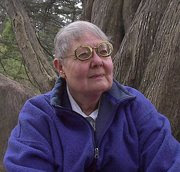Thursday, September 11, 2014
More on Hindu Cosmology
"The Hindu cosmology and timeline is the closest to modern scientific timelines and even more which might indicate that the Big Bang is not the beginning of everything, but just the start of the present cycle preceded by an infinite number of universes and to be followed by another infinite number of universes.
The Rig Veda questions the origin of the cosmos in: 'Neither being (sat) nor non-being was as yet. What was concealed? And where? And in whose protection?…Who really knows? Who can declare it? Whence was it born, and whence came this creation? The devas were born later than this world's creation, so who knows from where it came into existence? None can know from where creation has arisen, and whether he has or has not produced it. He who surveys it in the highest heavens, He alone knows-or perhaps does not know. '" (Rig Veda 10. 129) (From Wikipedia)
"The Rig Veda's view of the cosmos also sees one true divine principle self-projecting as the divine word, Vaak, 'birthing' the cosmos that we know, from the monistic Hiranyagarbha or Golden Womb. The universe is considered to constantly expand since creation and disappear into a thin haze after billions of years. An alternate view is that the universe begins to contract after reaching its maximum expansion limits until it disappears into a fraction of a millimeter. The creation begins anew after billions of years (Solar years) of non-existence.
The puranic view asserts that the universe is created, destroyed, and re-created in an eternally repetitive series of cycles. In Hindu cosmology, a universe endures for about 4,320,000,000 years (one day of Brahma, the creator or kalpa) and is then destroyed by fire or water elements. At this point, Brahma rests for one night, just as long as the day. This process, named pralaya (literally especial dissolution in Sanskrit, commonly translated as Cataclysm), repeats for 100 Brahma years (311 Trillion, 40 Billion Human Years) that represents Brahma's lifespan. Brahma is regarded as a manifestation of Brahman as the creator." (from Wikipedia)
Elsewhere it is noted that according to current scientific notions, the big bang occurred about 10-15 billion years ago. The date given by these ancient rishis for the beginning of our current universe is 8.64 billion years ago.
In addition, these early sages asserted that there were many universes existing simultaneously in the cosmos--a theory also espoused by many scientists today ("the Many Universe Theory").
Each period in which these universes exist is called "The Day of Brahma." The intervening period in which nothing exists is called "The Night of Brahma." During the
"Day," Brahma is said to be awake. The time of nothingness is called "The Night of Brahma" (when Brahma sleeps).
Scientists today are puzzled as to what existed before the Big Bang. The rishis provide an answer to this puzzle: the Night of Brahma.
The tables cataloging the various "sub- divisions" of the longer time span are unbelievably complex and suggest that these ancient worthies were incredibly sophisticated in their computational skills--and strongly suggest help from "outside" (heavenly) sources.
Finally, after many, many cycles of "Day and Night," Brahma himself is dissolved and a new Brahma is created by Brahman, the ultimate Source and Creator of all.
Today, science tells us that our universe is composed not of matter per se, but energy itself. In my view, when we connect to this energy through Kundalini, we are united with
the divine essemce of our universe. As Yeats noted, "Man can embody truth, but never know it."
(picture from internet)

